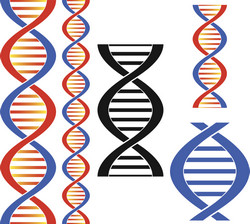DNA mimics may be future cancer drugs
A large number of proteins in the cell bind to DNA, usually by recognising the shape and surface characteristics of the ubiquitous molecule. Structures that mimic DNA will also bind to these proteins, giving researchers a way to study these interactions. The EU-funded DNAMI (Aromatic oligoamide foldamers as mimics of double helical DNA) initiative aimed to design and create such structures, and then test their suitability as DNA mimics (DNAMIs). The project started by creating two different quinolone-based monomers – building blocks that can be strung together to form the DNAMI. These were then tied together into oligomers made up of 2-16 repeats of monomer pairs. Researchers also created water-soluble versions of these oligomers. DNAMI then focused on physical and functional characterisation of the oligomers. Structurally, the oligomers were identical to short stretches of DNA up to 8 base pairs long. To test the functional mimicry, the scientists used topoisomerase (Top1) assays – Top1 is a common DNA-binding protein and the assay is used to measure inhibition of DNA binding. The oligomers created in DNAMI could very successfully inhibit DNA binding, demonstrating their functional mimicry of helical DNA. A synthetic molecule that looks and behaves like DNA offers huge potential to further biological research. Ultimately, this type of molecule could even be a cancer therapeutic by inhibiting overactive DNA-binding proteins.







